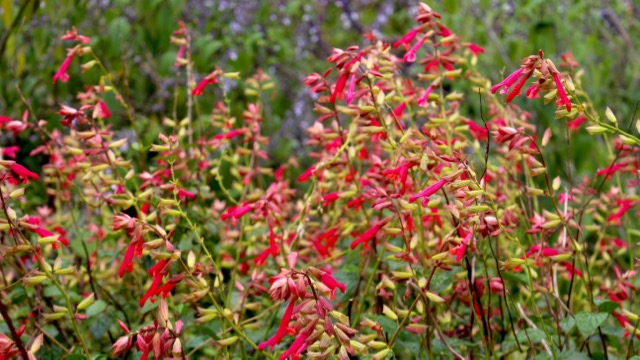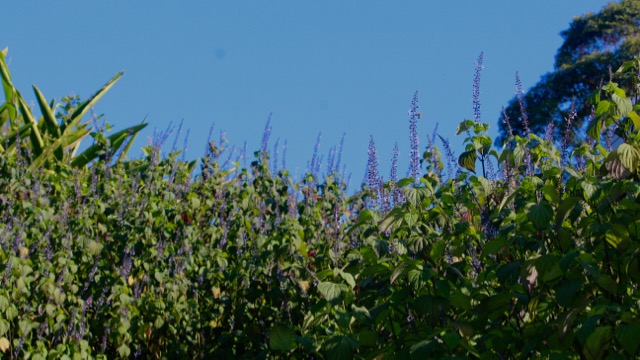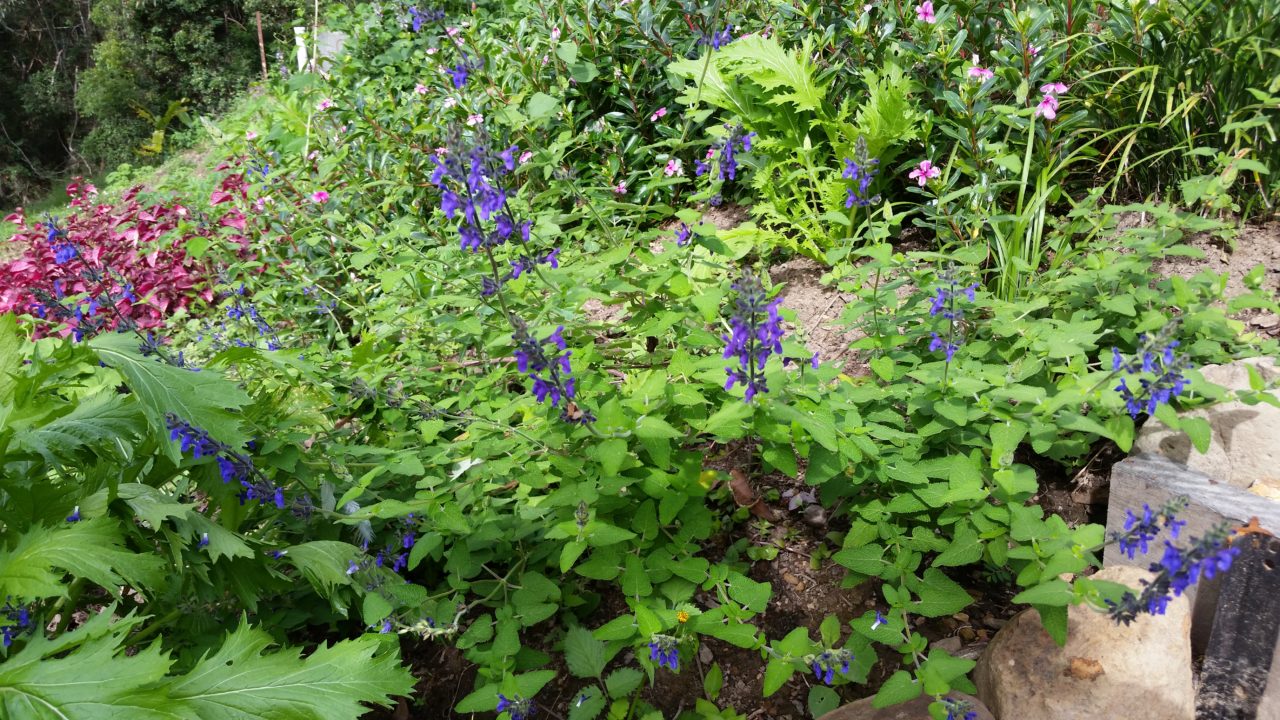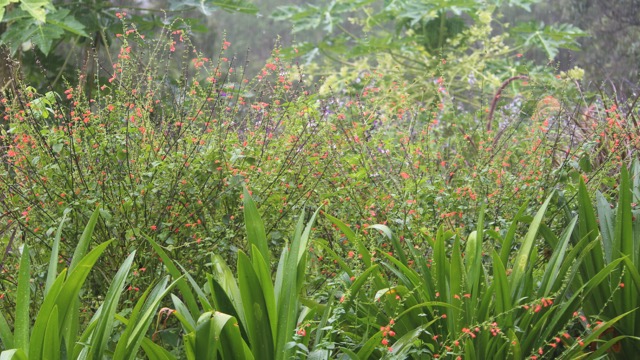Salvia ‘Ember’s Wish’ is one of the stand-out cultivars at the red end of the spectrum. Not a pure red, Robin Middleton describes the colour as coral, which is helpful. I think the photos here are fairly true to nature.
Read MoreYear: 2018
Salvia roscida (fallax)
Salvia roscida has a unique form which gives it a particular role in my garden as a hedge, screen or pioneer. It is tall, densely foliaged and upright, which makes it useful as a hedge or screen. Spikes of pale blue flowers are held vertically, above the foliage. As Rolando Uria comments, the stiff spikes of flowers are reminiscent of Plectranthus (Coleus). Here, flowers start in May (late Autumn) and last until Spring. Description Salvia roscida can grow more than 2 m high. The caney stems branch from the base…
Read MoreSalvia Harmony
This is a lovely low growing salvia with masses of deep blue flowers from late Summer, and attractive foliage the rest of the time. Salvia ‘Harmony’ is also called Salvia scordifolia by some, but as ‘scordifolia’ means ‘garlic leaf’, I am inclined to follow the opinion that it’s not a real name. Robin Middleton writes that it is reported to have been found in Ecuador, then grown and sold for a while under the wrong name. He also writes that it is particularly difficult to grow in the UK due to…
Read MoreSalvia naming – good to understand for gardening, essential for science
To avoid confusion, it’s good to understand salvia naming conventions. There are a couple of ‘levels’ of naming, to do with whether a plant is a species as found in the wild, or a garden cultivar. I try to use standard naming as it minimises ambiguity. Species Botanists collect plants and name them in the binomial (two name) system of genus and species. Salvia is the sage genus, and for example ‘officinalis‘ is the herb sage species. The binomial is indicated by italics, i.e. Salvia officinalis. The genus gets a…
Read MoreSalvia resources; books and websites
There are plenty of resources on salvia growing; mainly websites but also books. As growing conditions vary so much, it’s good to consult a reference from as close as possible to your own climate, as well as general reference articles on particular plants. I am listing the resources I mainly use here partly as a bibliography for my posts. I use the standard surname system, indicated below in bold. The classic salvia reference book is Betsy Clebsch‘s ‘The New Book of Salvias’ (2003), published by Timber Press. It seems to…
Read More



